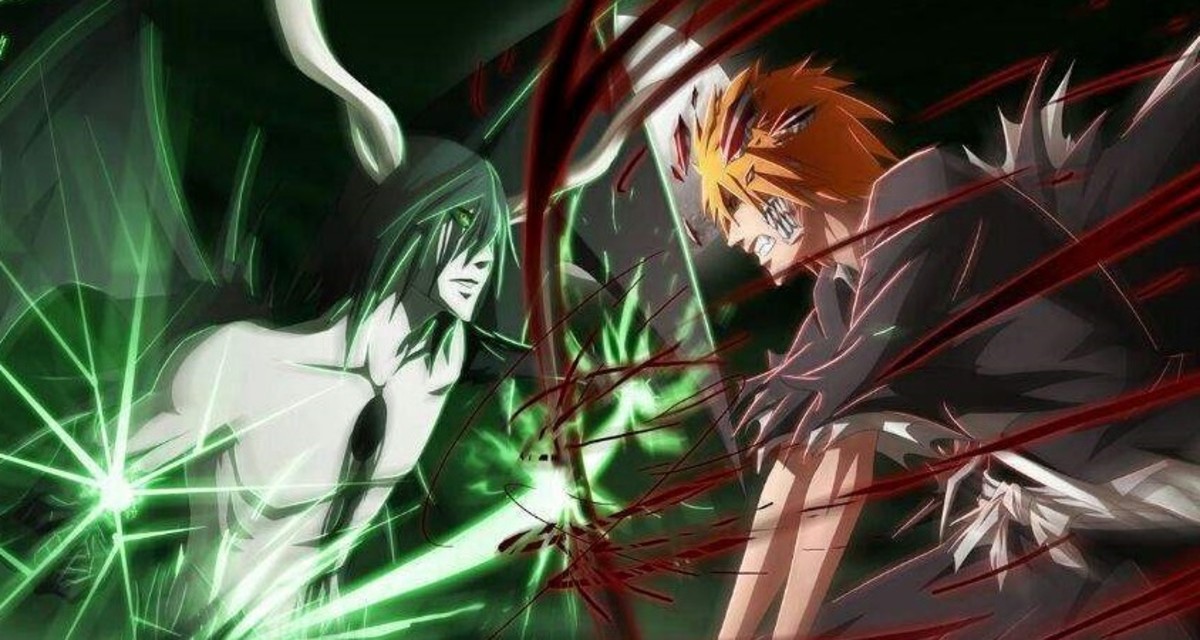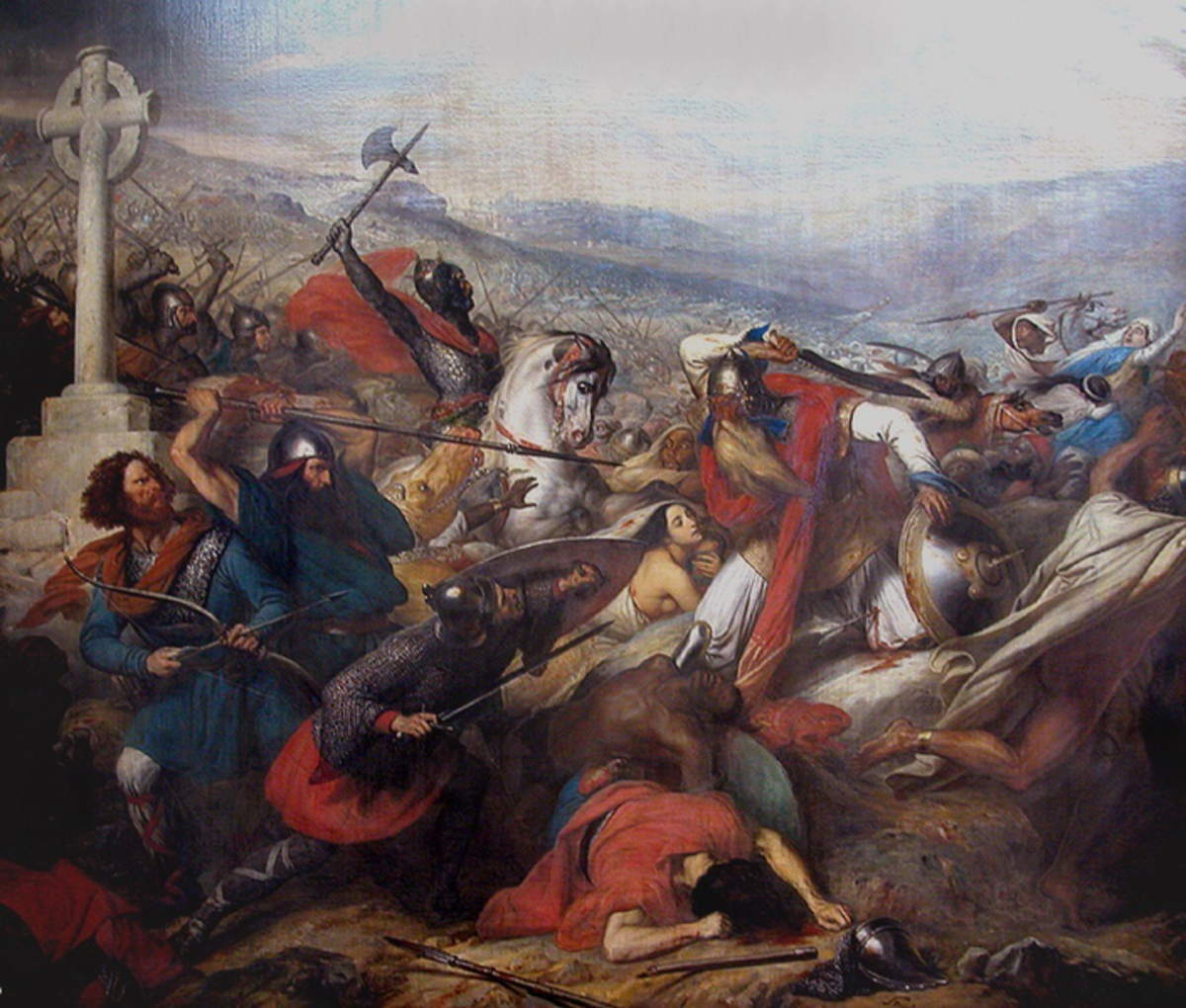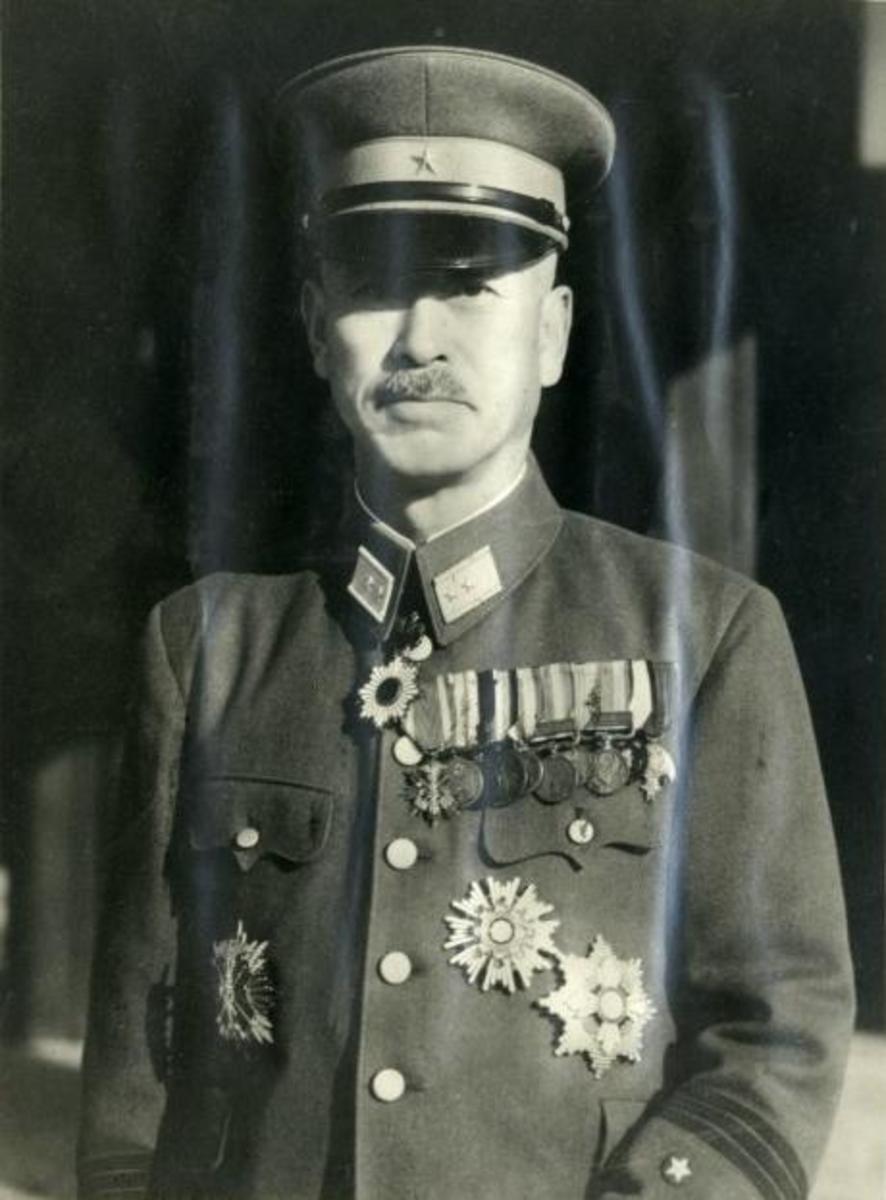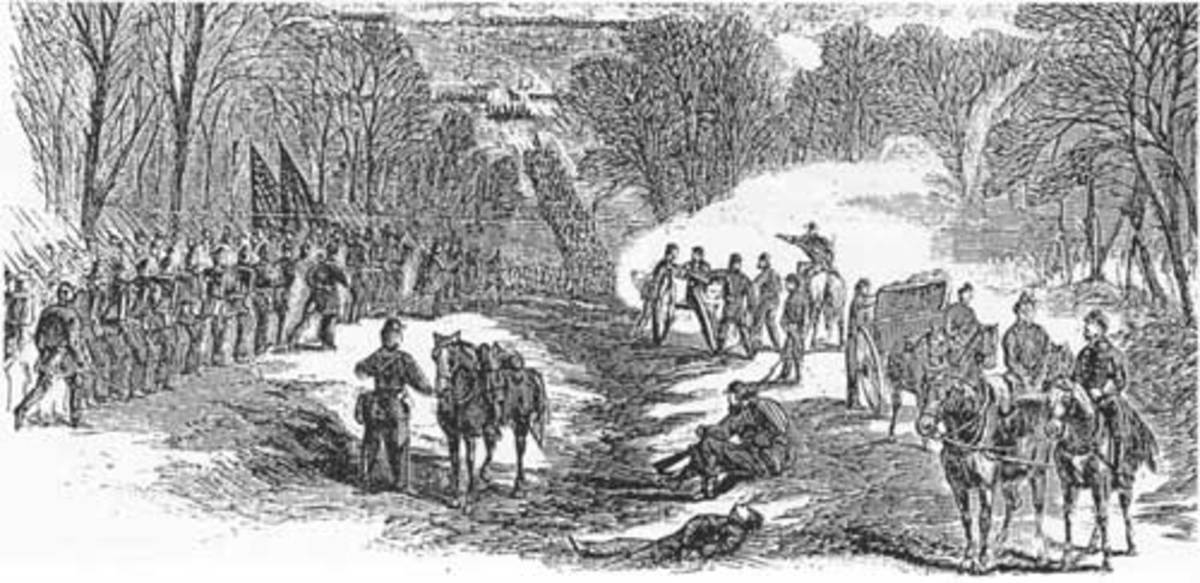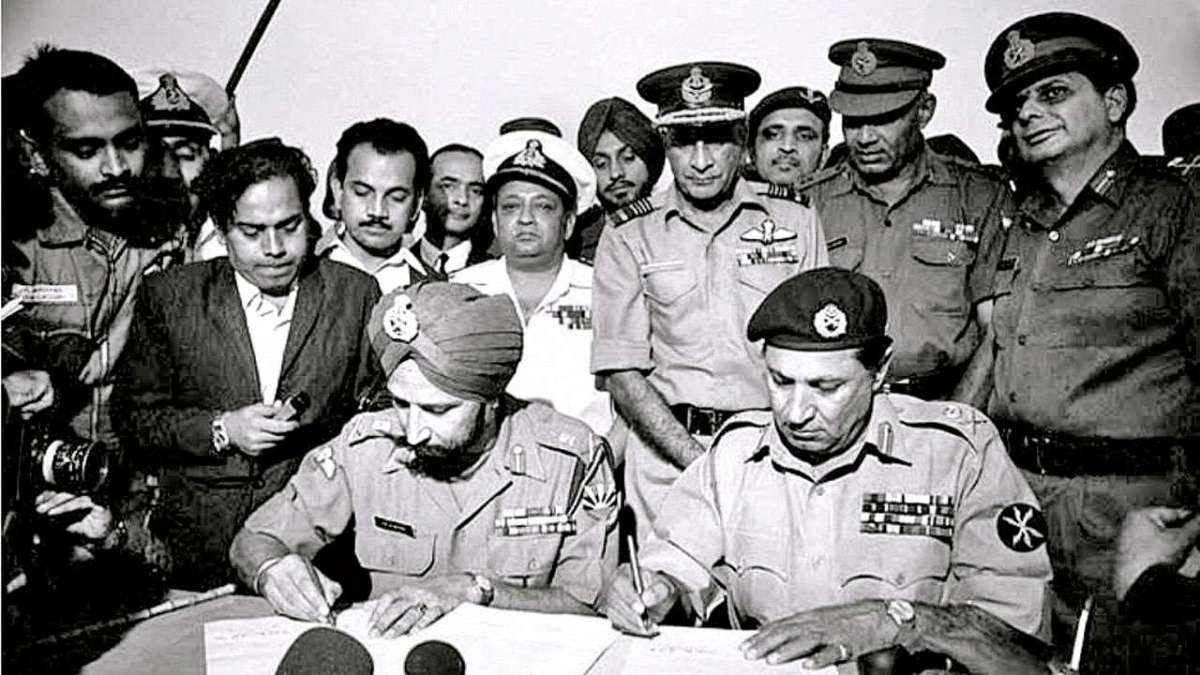- HubPages»
- Education and Science»
- History & Archaeology»
- Military History
Uesugi Kenshin: God of War
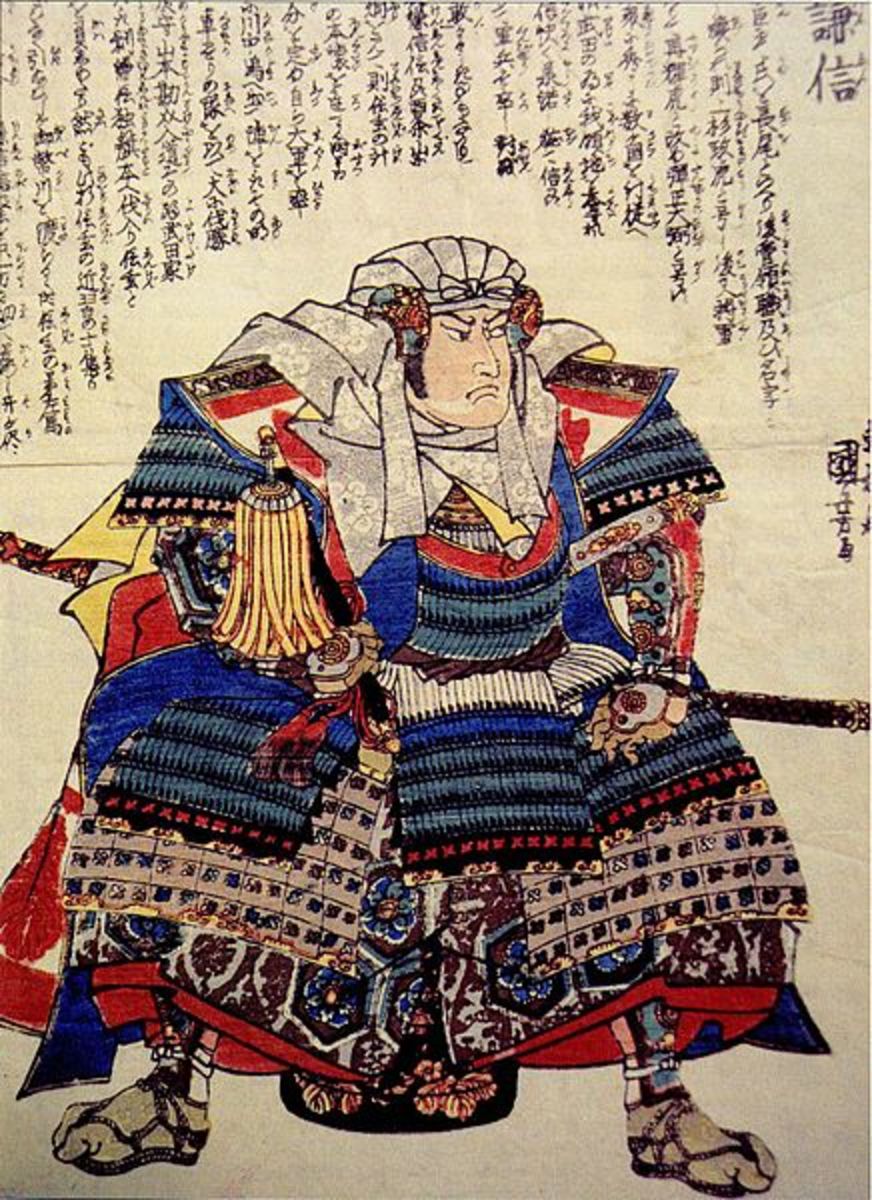
The Dragon of Echigo
Uesugi Kenshin was one of the most well known and powerful leaders during the 'Sengoku' or 'Warring States' period of Japan. He ruled Echigo Province and was known as one of the greatest strategic minds of his time. The people called him the 'Dragon of Echigo' for his brilliant war strategy. Beyond his fame for warfare he was also considered a great leader with economic prowess and a devout Buddhist monk that was very interested in the Buddhist war god Bihamonten. He was known for being very honorable as was his deity Bishamonten and many people at the time believed he was a living avatar of war god, and thus he was given the nick name of 'God of War.'
Kenshin was born in the Echigo Province with the name Nagao Kagetora, and like many others at the tiime would go through multiple name changes in his life. When Kenshin was a small child his father was slain in battle. His older brothers fought for control of his power, and the seven year old Kenshin was sent to a temple to study until he was fourteen. Several people loyal to his father approached him and attempted to persuade him to seize power from his older brother. Kenshin didn't want to go against his brother, but his rule had not been a successful one and Echigo Province was following apart. To save his Province Kenshin took arms up against his brother and after several battles seized control of Nagao Clan.

The Dragon vs. The Tiger
Kenshin wasn't in power very long nor had he secured the whole province when local clans approached him seeking aid against a warlord named Takeda Shingen. The Tiger of Kai Takeda Shingen was also a brilliant strategist and had battled his way to the edge of Echigo lands. Kenshin decided that Takeda posed a real threat so he agreed to assist in challenging Takeda. A legendary rivalry would be born.
The two great strategist's forces would meet at Kawanakajima five times in battle.
The First Battle of Kawanakajima, 1553
The first time their forces met the two warlords didn't throw everything they had in to it trying to get a feel for their opponent. Neither side suffered heavy losses and the battle remained indecisive.
The Second Battle of Kawanakajima, 1555
Initially Kenshin had a tactical advantage, but an ally of Shingen's was able to hit Kenshin's forces from the flank. While he didn't suffer heavy losses this thorn in his side didn't allow him to position his army correctly to take on the full might of the Takeda. Eventually he would push his entire force down to even ground with the Takeda but instead of attacking each other they came to a stand off. It appeared they each were waiting for the other to make a move. They both continued waiting for several months but eventually both men had to return home to deal with various issues.
The Third Battle of Kawanakajima 1557
Takeda Shingen attempted to take a castle, and Kenshin arrived with his forces to oppose him. Again the two great strategist would act leery of each other, and not throw everything in to a full battle against each other. That would change two years later in The Fourth Battle of Kawanakajima.

The Fourth Battle of Kawanakajima 1561
This battle would become known as one of the greatest battle of the Sengoku period. Finally the two leaders through everything at one another in a grueling battle. Before the battle the Takeda army split in two groups secretly. One group stayed in position as the main force, while the second group attempted creep around the flank to force Kenshin on the plains with Takeda's main force. However when Takeda woke up the next morning he found Kenshin's army facing his ready to charge. Somehow Kenshin had realized the scheme and was able to sneak his own men down the other side of the mountain during the night. Kenshin used a new strategy in this battle where he had units run in to replace units that were weary. This way his men stayed fresh.
Kenshin's army eventually pushed through to Takeda's command center and Kenshin rode his horse forward and attacked Takeda Shingen one on one. Kenshin remained mounted and used his sword. Takeda Shingen was not expecting this type of battle and did not have a weapon to fight back with other than his iron war fan, which was meant for signaling troops. Kenshin hacked away at Takeda, and Takeda parried each blow until help arrived to drive Kenshin back.
Despite this valiant charge the Takeda forces were still able to hold their lines until the split group was able to return and Kenshin ordered his men to retreat. Takeda Shingen did not pursue. When the day was over Kenshin lost 3,000 men while Takeda lost 4,000 men and 2 of his top generals. Again battle between the two remained indecisive.

The Fifth Battle of Kawanakajima, 1564
The two forces met one last time which lasted for 60 days of battle. Once again it would end in a stalemate.
Despite having a legendary rivalry with one another and being considered enemies, Keshin and Takeda both held a deep respect for one another. The two even traded gifts occasionally, including Takeda Shingen giving Kenshin a favorite sword of his. At one point another clan had the Takeda's supply lines cut off and Kenshin secretly sent Shingen a large quantity of salt which was highly valued at the time. Before Takeda Shingen died he told his son to trust Kenshin. When Takeda Shingen died it is said that Kenshin wept openly and refused to take the opportunity to strike against the Takeda clan. Shingen's son would eventually become an ally to Shingen.

Beyond the Tiger
Though he is best known for his rivalry with Takeda, Kenshin also had various other battles and political situations throughout the many years he went back and forth with Shingen. It was during that time he became infatuated with Bishamonten and secured Echigo Province securely under his rule.

The Dragon vs. The Demon
After the death of Takeda Shingen there weren't many left to truly oppose the powerful figure of Oda Nobunaga. Oda Nobunaga had secured himself Japan's most powerful force. Kenshin knew it was only a matter of time before the Oda Clan attacked Echigo, so Kenshin met the Oda in battle. Oda Nobunaga brought a massive force to face Kenshin, but Kenshin's strategic genius was no longer rivaled and his force destroyed a quarter of Nobunagas force. They continued small skirmishes but Kenshins health was beginning to fail.
The Death of the God of War
Like so many great men... Uesugi Kenshin died on the toilet. His death has remained the source of much speculation. Most believe that he died of illness but some believe that a ninja assassin was waiting under the toilet and stabbed him when he sat down. I promise I'm not making that up.
Regardless of how he died his effect on the history and culture of Japan remains. His rivalry with Shingen has been popularized through cinema and even video games. His example as an honorable warlord shines as an example even today. Shingen made a famous quote when he gave Shingen the salt that went, “Wars are to be won with swords and spears, not with rice and salt.” A slightly different version of this quote is used today by various peace groups that goes, “Peace is to be achieved with rice and salt, not with swords and spears.”

Check Out My Other Hubs About Legendary Samurai
- Takeda Shingen: Legendary Strategist and the Tiger of Kai
A brief biography about the Tiger of Kai Takeda Shingen. - Toyotomi Hideyoshi: The Monkey, From Sandal Bearer To The Second Unifier
A short biography of Toyotomi Hideyoshi, a important figure in the Samurai era of Japan. - Hattori Hanzo: Ninja Master
A short biography of the Ninja Master Hattori Hanzo - Tokugawa Ieyasu: Shogun and Third Unifier Of Japan
A short biography of the Shogun Tokugawa Ieyasu - Honda Tadakatsu: A Samurai Among Samurai
A short biography of the legendary samurai Tadakatsu Honda - Musashi Miyamoto: Legendary Samurai and Author of The Book of Five Rings
- Oda Nobunaga: The Demon King And The First Unifier
A short summarized biography of Oda Nobunaga, an important historical figure during the Warring States Period of Japan.

